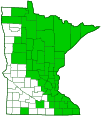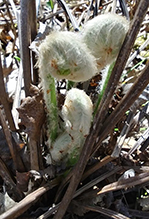interrupted fern
(Claytosmunda claytoniana)
Conservation • Wetland • Description • Habitat • Ecology • Use • Distribution • Taxonomy
Description |
Interrupted fern is a large, 20″ to 40″ tall, erect, perennial fern that rises on a cluster of several fronds from a very large rhizome. It forms small, dense colonies. Each plant produces one to several fertile fronds surrounded by several shorter sterile fronds. The leaf stem (stipe) is winged and is about ⅓ as long as the leaf blade. When young it is covered with orangish-brown hairs. As it ages it becomes nearly hairless. Sterile leaf blades are elliptic to oblong in outline, 20″ to 40″ long, and 8″ to 11¾″ wide. They are pinnately divided into 15 to 25 pairs of segments (pinnae). The lowest pair of pinnae are shorter than the adjacent pair, so that the blade is widest above the base, not at the base. The pinnae are alternate or almost opposite, spreading, oblong to lance-shaped in outline, up to 6″ long, and up to 1 3 ⁄16″ wide. They do not have a tuft of hairs at the base. They are deeply lobed (pinnatifid), with 15 to 20 lobes (pinnules) per side. The lobes are broadly oblong, squared off at the base, and rounded at the tip. The upper side is mostly hairless. The underside is slightly hairy, especially near the tip. The margins are untoothed and do not have a fringe of hairs. Fertile leaf blades are similar to sterile ones but taller and more erect. There are 1 to 5 pairs of fertile pinnae near the middle of the blade with sterile pinnae above and below. Fertile pinnae are medium brown to dark brown and much smaller than the sterile pinnae immediately above and below them. They are medium brown to dark brown. They are covered with numerous spore-bearing sacs (sporangia). They wither early in the season, leaving the blade with a gap in the middle, giving this plant its common name. Spores are produced from late April to May. |
Height |
20″ to 40″ |
Similar Species |
Cinnamon Fern (Osmundastrum cinnamomeum) fertile fronds are much shorter, rigidly erect, and turn cinnamon-colored when they mature. There is a tuft of brown hairs at the base of the sterile pinnae. |
Habitat |
Open, moist woods, swamp margins, shaded ledges. Full to partial shade. |
Ecology |
Flowering |
Late April to May |
Pests and Diseases |
|
Use |
|
Distribution |
||
|
Sources Tryon, Rolla Milton, Ferns of Minnesota, 2nd Edtition, University of Minnesota Press, 1980. Biodiversity occurrence data published by: Minnesota Biodiversity Atlas (accessed through the Minnesota Biodiversity Atlas Portal, bellatlas.umn.edu, 5/12/2024). |
|
| 5/12/2024 | ||
Nativity |
||
Native |
||
Occurrence |
||
Common |
||
Taxonomy |
|
Kingdom |
|
Division |
Tracheophyta (Vascular Plants) |
Subdivision |
Polypodiophytina |
Class |
Polypodiopsida (ferns) |
Subclass |
Polypodiidae (leptosporangiate ferns) |
Order |
Osmundales |
Family |
Osmundaceae (royal fern) |
Genus |
Claytosmunda |
Genus |
|
Subordinate Taxa |
|
|
|
Synonyms |
|
Osmunda claytoniana Osmundastrum claytonianum |
|
Common Names |
|
interrupted fern |
|
Glossary
Frond
A large leaf with many divisions: in ferns, the compound leaf, including the stipe and the blade; in mosses, a closely and regularly branched stem resembling a fern leaf; in lichens, a stalkless, leaf-like extension.
Pinna
The primary division of a compound leaf or fern frond.
Pinnate
On a compound leaf, having the leaflets arranged on opposite sides of a common stalk. On a bryophyte, having branches evenly arranged on opposite sides of a stem.
Pinnatifid
Deeply cut, more than half way to the midrib but not to the midrib, into lobes that are spaced out along the midrib; the lobes do not form separate leaflets.
Sporangium
A spore bearing structure, as of a fern or moss.
Stipe
A supporting stalk-like structure lacking vascular tissue: in fungi, the stalk supporting the mushroom cap; in ferns, the stalk connecting the blade to the rhizome; in flowering plants, the stalk connecting the flower’s ovary to the receptacle; in orchids; the band connecting the pollina with the viscidium.
Visitor Photos |
||
Share your photo of this plant. |
||
This button not working for you? |
||
Luciearl |
||
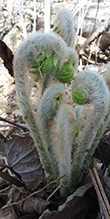 |
||
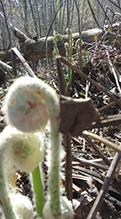 |
|
|
MinnesotaSeasons.com Photos |
||
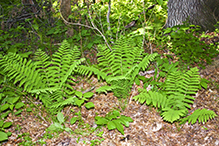 |
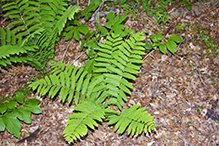 |
|
Plants |
Plant | |
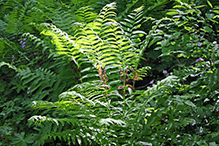 |
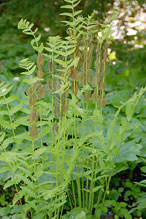 |
|
Plant |
||
|
||
|
||
|
Fertile frond | |
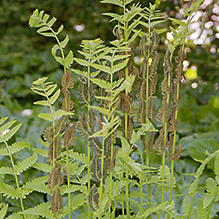 |
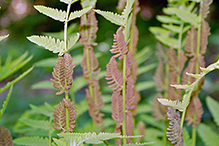 |
|
Fertile pinnae |
||
|
||
|
||
Fertile pinnae |
||
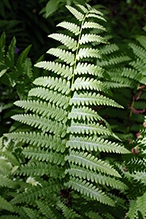 |
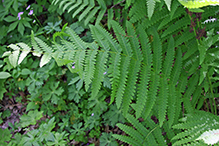 |
|
Sterile frond |
||
|
||
|
||
Sterile frond |
||
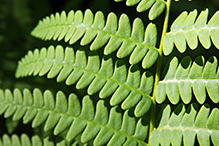 |
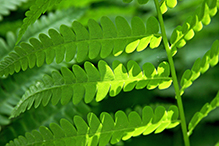 |
|
Sterile pinnae |
Sterile pinnae | |
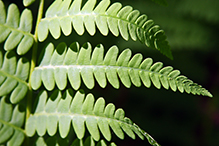 |
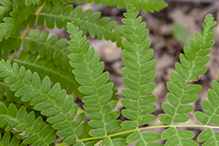 |
|
Sterile pinnae |
Sterile pinnae | |
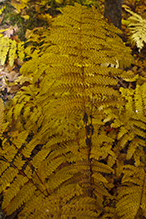 |
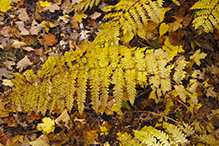 |
|
Fall color |
||
|
||
|
||
Fall color |
||

Visitor Videos |
||
Share your video of this plant. |
||
This button not working for you? |
||
|
Other Videos |
||
13 end interrupted fern.wmv |
About
Uploaded on Oct 13, 2011 New River State Park Wagonr Access Fern Nature Trail 2 miles. |

Visitor Sightings |
||
Report a sighting of this plant. |
||
This button not working for you? |
||
Luciearl |
Location: Fairview Twp. |
 |
MinnesotaSeasons.com Sightings |
||

|
Created: Last Updated: © MinnesotaSeasons.com. All rights reserved. |
